Privacy - a flower, which from the first minutes will be captivated with its beauty, and soon amazes with its healing properties. Privacy or Gentiana - the generic name of several hundred annual and perennial crops scattered around the world (with the exception of Antarctica and Africa). Most of them develop perfectly in opened soil and makes blooming in the spring and autumn. For the first time, who first settled the Gulchus in the garden, it will seem that the plant is very unpredictable and capricious in care. But, after the first bloom, all the difficulties of agrotechnology will seem insignificant compared to the beauty of the inflorescences of this mysterious culture.
Privacy, culture description
Types of Priva are significantly different by their external features and care requirements. The variety of shades of inflorescence, flowering periods and heights of the plant allows you to skillfully combine different grades of the princess in one mountaineering and rokaria, creating beautiful floral combinations.
- Prix \u200b\u200broot thick and wrinkled, which grows vertically. From the point of view of traditional medicine, it is the most valuable part of the plant.
- Stems of culture. Strengthening, their length varies from 6 cm to two meters. Gentian leaves ovoid, placed opposite.
- The inflorescences of the Prix and the Single, however, are also found in the form of umbrellas. Their color fascinates the depth of blue shades, but there are yellow, purple, scarlet, white color.
- Of the several hundreds of Privier, 90 varieties are evilurved. In our latitudes, most European species are successfully grown, but for admirers of exotic beauty there are many Asian varieties.
- Among the advocacy, both annual cultures and perennial representatives who are able to survive strong frosts in the harsh climate are found. Therefore, the guilty is a suitable herbaceous plant for open soil.
- Prix \u200b\u200bseeds are formed in the center of the fetus - a small one-minute box. Their magnitude is different from different species.
Variety of types of grass Gulch
Despite the large selection of apparatus species, gardeners prefer only a few of them:
- Gentiana septemberfida (the spaticral name of the Granite semi-exclusive) is an absolutely unpretentious representative of Asia. This is a medium shrub that does not exceed 35 cm. The inflorescences of the species are remembered by a purple-blue color, up to 7 cm.
- Gentiana Asclepiada (Known as Privacy Lastune) - a shrub with densely located stalks, 55-60 cm high. The perennial is capable of forming from 8 to 12 young shoots for a year; Flowering falls on August-September. The inflorescences of the Prix-in-law is unusual - five-packaged, collected in the form of a bell. Their color is soft blue, less often - snow-white.
- Gentian Gentiana pneumonanthe or pulmonary - pretty perennial, which is popularly called sea bell. Since mid-September on the sparse shoots, densely dotted foliage, blooms bright blue bells with purple tint. Buds formed on the entire height of the stem and blossom gradually. The average plant height of 30-40 cm.
- Gentiana triflora (second name gentian trehtsvetkovaya) - perennial prefers swampy meadows and rocky areas. Possesses the characteristic branched rhizome, stems up to 80 cm in height, inflorescence bokaloobraznye. Bloom culture large buds, which are formed by three pieces in a bundle (so called trehtsvetkovym view). Color gentian - ultramarine.
- Gentiana dahurica - originally from Mongolia. For a species characteristic rosette of linear leaves. Dahurian Gentian grows up to 40 cm. Its straight stems and long fade color, make it possible to keep a long time in the slice gentian. Inflorescences are painted in intense blue color, are located in the axils of upper leaves. It can be grown in open ground or in containers.
- Or Gentiana verna Gentiana Verna - the undersized species, which in the environment is difficult to see among other herbaceous plants. Perennial lets shoots 5-10 cm in height, which bloom in July pyatilopastnye blue flowers with a diameter of 1.5-2 cm. Type of frost.
- Gentiana suciata or gentian perekrestnolistnaya - a plant height of 30-60 cm, preferring open sunny areas. Stems solitary, not branched, gustooblistvennye. Inflorescence, gathered in bundles, located in the leaf axils. Corolla bud blue, framed by four curved slices of black. Flowering gentian cruciate until October.
- Gentiana macrophy (another name Gentiana macrophylla) - form differs long flowering period, which lasts up to 45 days. Lanceolate leaves with a sharp end and a length of 20 to 40 cm. Lifted dense stems 55-70 cm in height are formed corollas bell-shape with a diameter 1.6-2 cm. Inflorescence color with a pale blue violet overflow.
- Gentiana acauliss (The popular name of Koch) - undersized species, which stems barely reaches 10 cm For this reason, the plant is known as gentian acaulescent.. Flowering begins with the arrival of spring. Over a carpet of leaves low rise large inflorescences. Their different color: pink, violet, white, blue. This kind of perfectly complements the rock gardens and small flower beds.
- Gentiana Lutea (yellow Prix) is found in the natural area of \u200b\u200bgrowing in Asia Minor and the middle part of Europe. One of the highest representatives of the genus growing up to 150 cm in height. The lower row of the leaves of the oval shape, they are larger and pass into the petiole, and the stem leaves smaller. At the type of the yellow inflorescences of the medium size (2-2.5 cm in diameter), numerous, located in the sinuses of stem leaves and on the top. The life expectancy of the Yellow Protector is 60 years.
Methods of proclaiming Programmer
Gentian easily propagates a vegetative method (division of rhizomes, grooves and stalling). But experienced gardeners cope with the seed reproduction of the plant. Each method has its own characteristics and it is important to correctly combine the variety and the method of reproduction.
Seed Primposition Method
Seeds of Gitecle are distinguished by a very low geogide, so this method is not for everyone. This happens because of very small and unstable to oscillations of the seed environment. Therefore, gardeners recommend working only with freshly collected seeds and not forget about stratification.
The duration of it is different for different species. For example, for the thermal-loving grades of the guilty growing on open slopes, it is completely enough for 25-30 days for the formation of the embryo. While for varieties growing in the mountains, you will need at least two months of artificial wintering.
- For the stratification of the seed material, part of the seeds should be mixed with three parts of the sand, and then put the container in a wet room, where the air temperature is not higher than + 7⁰s. As an option is suitable for the usual refrigerator, if there are no other rooms.
- Seed landing on seedlings is held from January to the end of April. More accurate time of disembarkation depends on the varietal features, which is necessarily indicated on the packaging with seeds.
- Shortly before the landing, the container with seeds is taken from the cold medium and put in a warm room. Seeds are sown in a slightly moistened fertile soil, the compost is placed on top of a thin layer, covered with film or glass.
- So that the seeds do not disappear, and the rot does not appear, the greenhouse is systematically opened, ventilated, the substrate moisturizer from the pulverizer.
- The appearance of shoots can be expected in three weeks. As soon as the first seeds proceed, the ventilation period gradually increase and the shelter is completely removed.
- For the normal formation of healthy leaves, the container with sprouts put in a light place with a temperature of + 18⁰s (not higher!). As soon as two full-fledged sheets appear, young sprouts dive into individual pots.
It is also practiced and winter sowing of the princess in the ground. Grocery necessarily align, it is desirable to sift the top layer. Then small seeds are simply scattered over the surface and are increasing inclined, and larger - additionally covered by the Earth's ball. In the same way you can sink seeds into large pots and put them in the shaded zone of the garden.
A vegetative way of reproduction of the Granite
The more simplified and efficient method of breeding culture is the division of the bush and shifting.
The first method of reproduction is the division of the bush - it is used for species with a branched root. If the root is presented in the form of one rod, it is not possible to propagate the plant. Perfectly divide all Asian varieties, as well as spring-breathing tubular species.
Ossennets-driving gentians spread in autumn after flowering, and Dinar and Fewless Privacy - in the first days of summer. In the regions where the cold comes early, the division of the bush is undesirable.
The division of the Custa Custa is carried out like this:
- An adult bush without traces of illness digs up, divide the shovel in half so that the growth kidney attended each of the parts.
- Be sure to leave an adequate room of the earth and along with it the decenes in the pots are planted, so that they increase the rhizome faster.
- Some species, such as spring advocacy, can be immediately planted on a flower leaf provided that the soil is not too light.
Important! There is a simple method for determining a suitable type of reproduction for the guilty: if the plant grows in the form of a thick bush, it needs to be divided if the seed reproduction is chosen in the form of one socket.
The hauling is suitable for Chinese prize-tree species that bloom in September. The method is also used for the reproduction of spring-working gentian - seven-part, spring, Lagodoechian.
From the bush on which the buds have not yet appeared, small cuttings are cut off. They immediately root into the ground, which consists of sand (suitable only coarse-grained), humid and peat. It is important to exclude an admixture of lime or clay. The rooted cuttings are definitely shared and moisturized the soil.
Reproduction is also successful. The length of the prure of the guilty is pressed against fertile soil and fixes the bracket. With sufficient watering, the Escape is completely rooted. After that, you can separate the baby and fall into the vase or on the flowerbed.
Gulch, landing in open ground
On the flowerbed, seedlings are planted in May-March or October. Each plant is immersed in the well, at a distance between the instances of 20-25 cm. The soil for the guilty is required sour, fertile.
Soil before planting diligently jump, loose and necessarily laid drainage (fits crushed stone, small stones, gravel). Then the wells are made, on the bottom of which the limestone is poured. The depth of planting plants corresponds to a garden soil line. After landing, all seedlings are watering.
Gain Protection, Garden Care
Ginger care techniques are caused by a planted variety. Most questions arise when growing perennial varieties. It is required to create optimal conditions for growth, and then maintain the plant competent irrigation and feeding.
Optimal Policy Watering Mode
Gentian needs timely irrigation. Before flowering and directly at the time of the bootonization, the soil should not disappear. If at this moment a lot of precipitation fell, instead of irrigation, it is often necessary to loosen the soil to avoid the roting of the roots.
Gulchka badly tolerates hard water. It is possible to solve the problem in several ways: to use talu and rainwater or to bring wood ash into conventional water.
Competent fertilizer fertilizer
Gulchy is very modest towards feeding. Fertilizers need rarely in small quantities. The excess of some substances may rather harm than to help.
The optimal solution will be the annual introduction of peat with sand in the spring. If the soil is acidic, complex drugs for rhododendrons are well suited, in the event of a limestone predominant, an iron-containing organic iron is necessarily introduced.
Advice! The key to prolonged and rich Gentian blossom is regular weeding. To reduce the efforts to irrigate the weed, you can climb the land around the bush multicolored gravel.
Pruning and wintering Prix
Pruning plants is not mandatory and is carried out to maintain a beautiful view of the plant. It is permissible to carry out the slice of already blurred shoots or cut them at the time of the bootonization, since the buds are beautifully in the water.
Almost all types of gentite in the natural environment survive in ferocious conditions, which is why frosty winters in our latitudes are not obstacled for them. The plant can continue flowering even when the temperature drops below zero, and then calmly go to the wintering.
In the regions with an insufficient volume of the snow, gentian is better to strengthen it for the winter - fallen foliage, branches of needles.
Advice! It is important to know how to get the seeds of the princess: after the end of flowering, small boxes will appear on the stalk. When they become brown, you can collect seeds. If the weather conditions are rainy, you can cut the floral arrow and give the seeds to reset the house.
Pests and Genther Diseases
All types of gentian are resistant to diseases and are rarely damaged by pests. If the difficulties arise, then it is most often caused by improper departure. So, when signs of rotting, irrigation is needed. And the excess of air humidity attracts slugs, contributes to the development of fungal diseases.
Save the Gulchus with timely detection of the problem is easy. The pests are harvested manually, and a drainage is built for the treatment of diseases, the soil is regularly fried or a plant transplant is carried out to a new place, followed by a fungicide processing.
Prix \u200b\u200bProperty and Application in Folk Medicine
Starting from the II century BC. E., Gulchovka was grown not easy to decorate the garden, but also to obtain an invaluable medication from the plague. Nowadays, thanks to the high content of alkaloids and bitter glycoside, the guilty is used as a choleretic agent, it helps improve appetite, has a beneficial effect on digestion.
It is useful to the guilty for colds. The infusion of this plant suppresses the cough, relieves inflammation, lowers the temperature, soothes the nervous system.
The appointment of bravery brave shows excellent results in the treatment of pathologies of the musculoskeletal system, glides invasion, convulsion, allergic pathologies.
Plant Gulch, role in landscape decoration
Targetting color male makes it an important part of modern landscape design. All types are popular with popularity: and low-spirited basin and tall bushes blooming both in summer and autumn. Their expressive blue color is beneficial in group landings with the predominance of snow-white and yellow colors.
Use gentian to land in Rabatka, to decorate bending tracks, as well as in solitary landings. And of course, it is difficult to imagine mountaineering or rocky kindergartens without an extraordinary gingerbread.

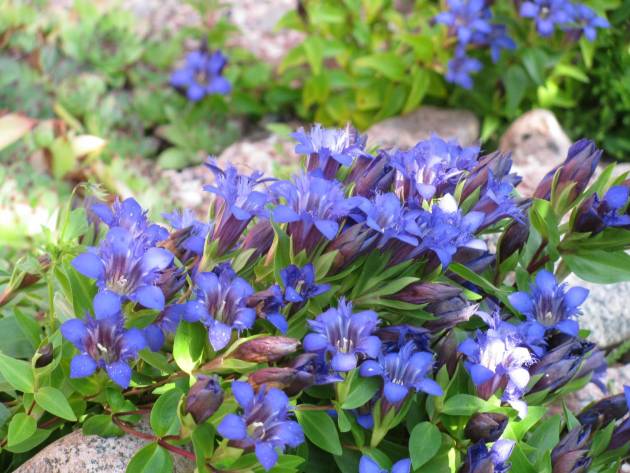
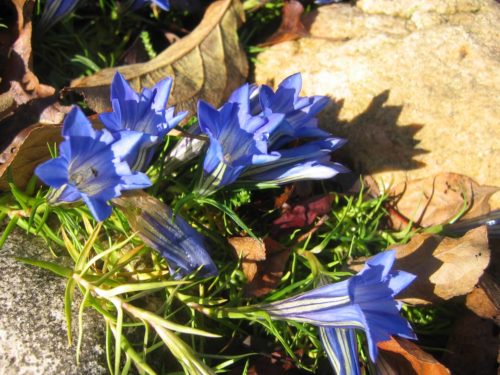
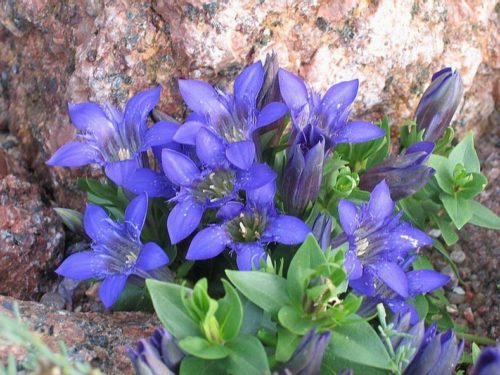
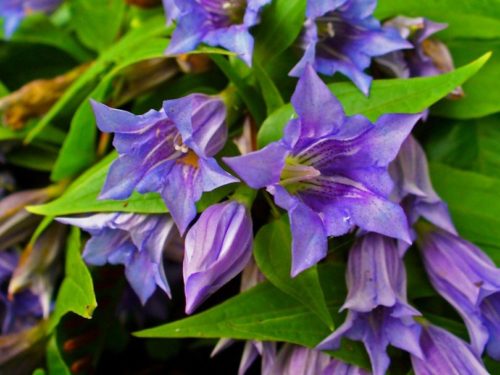
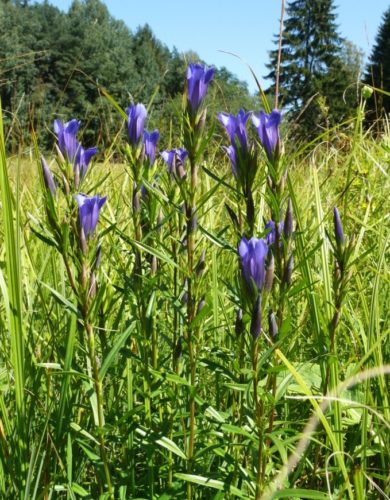
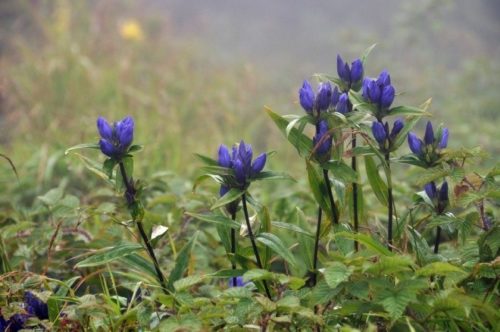
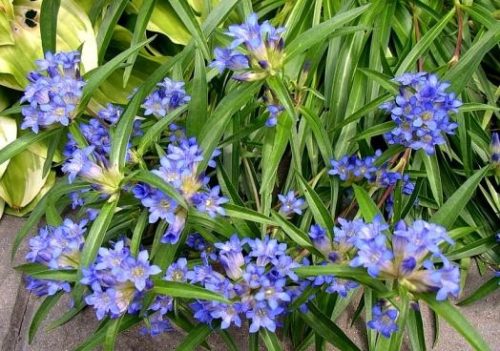
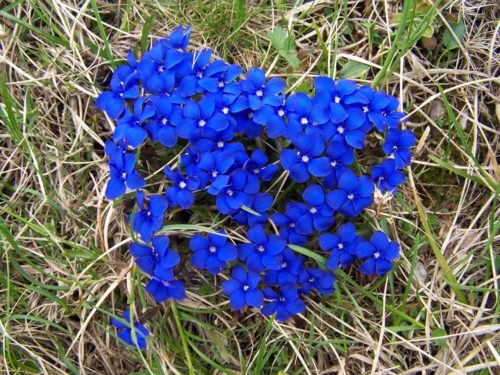
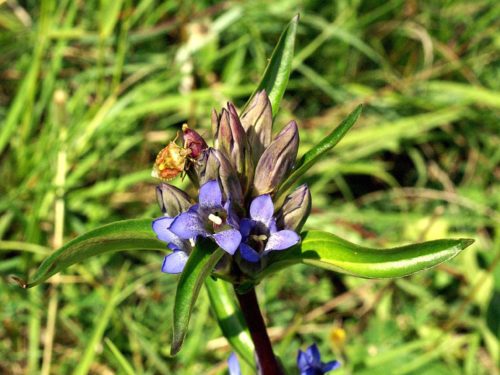
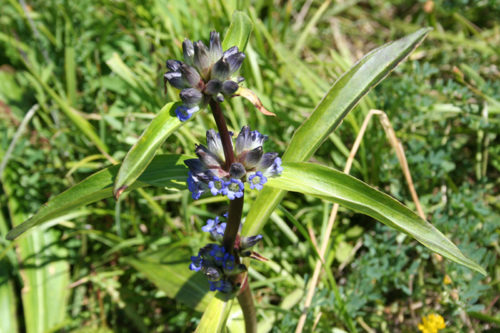
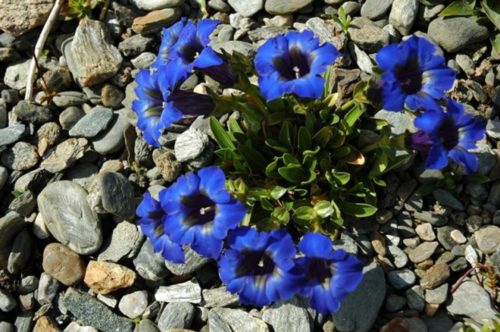
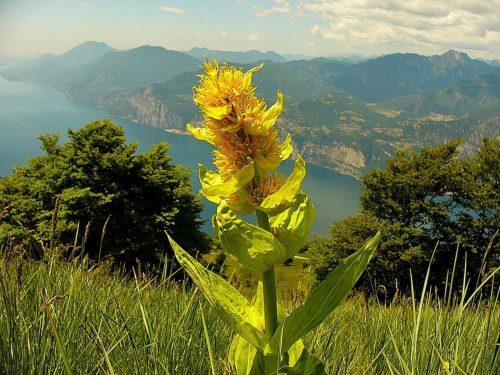
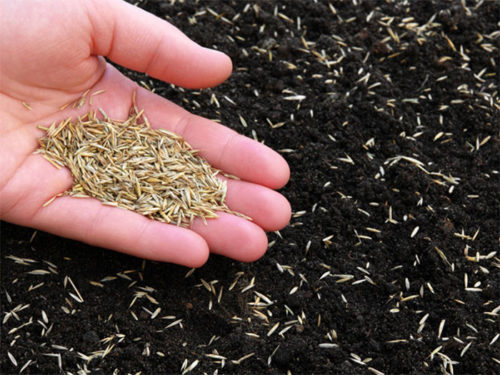
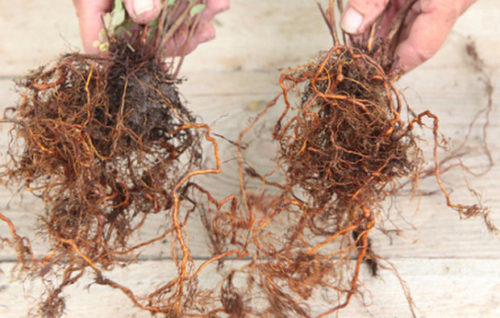
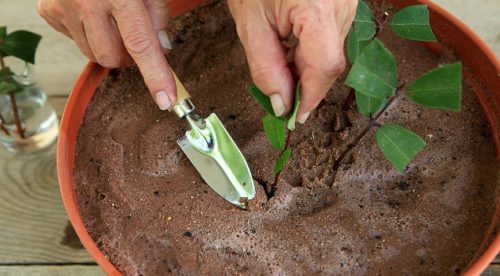
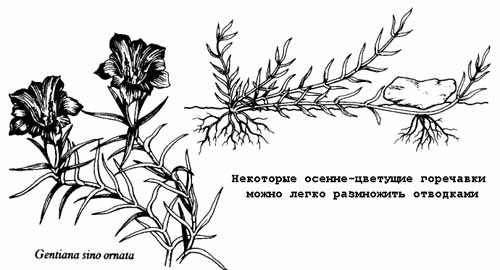

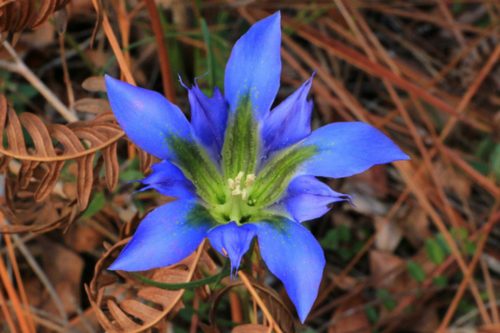
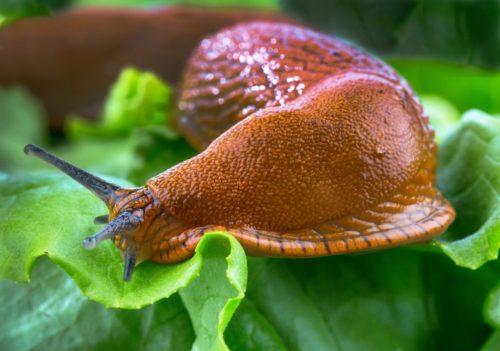
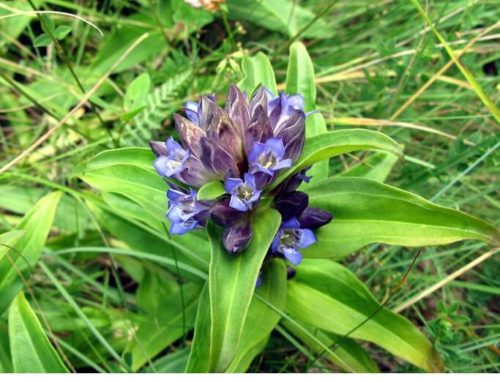
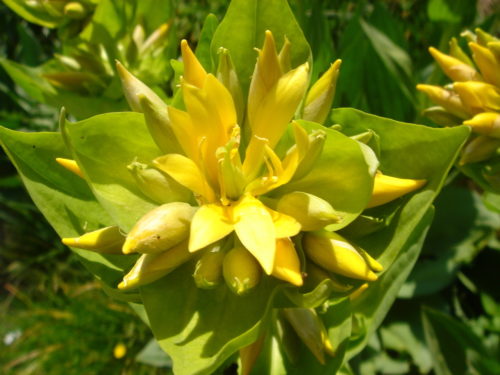
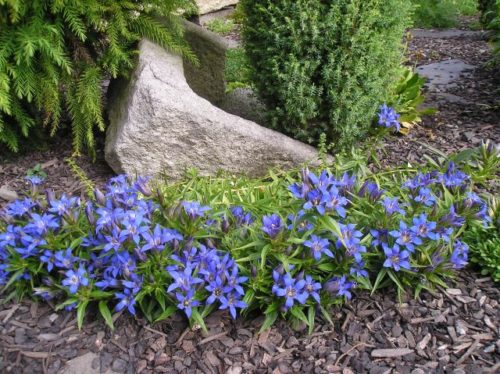
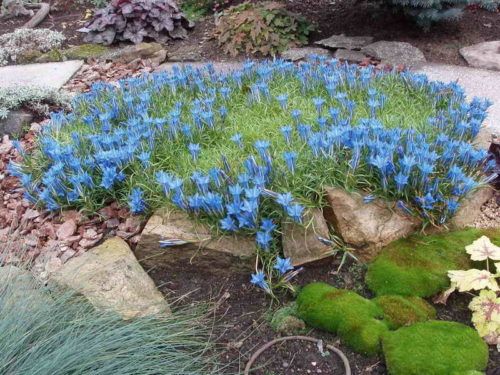
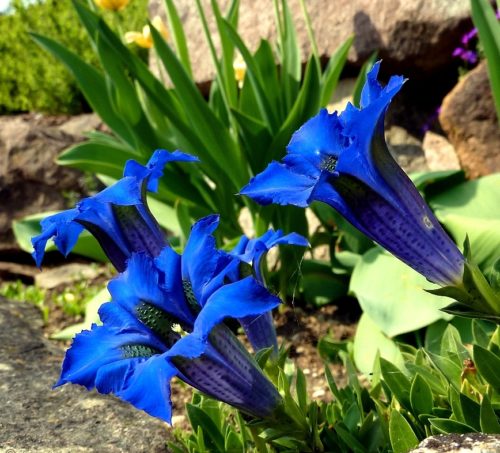
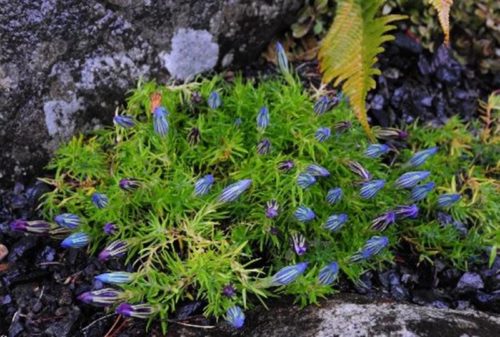
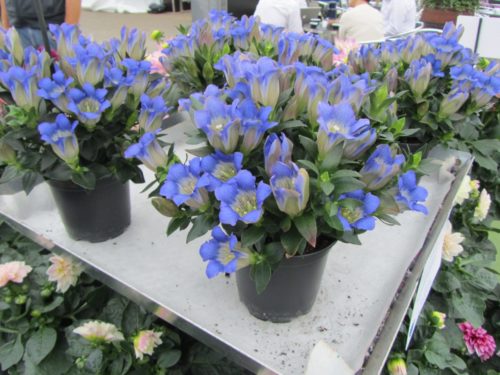
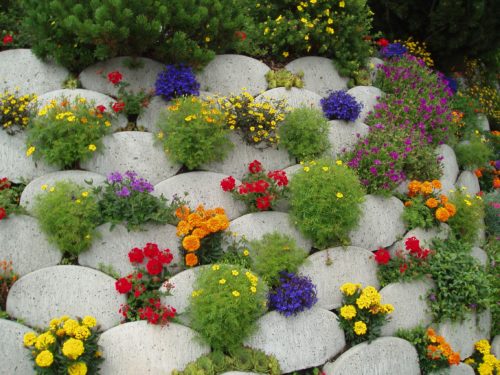
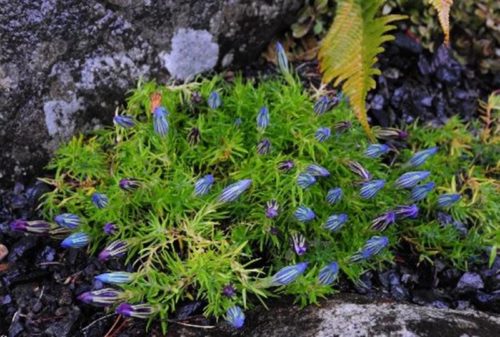












 Start a discussion ...
Start a discussion ...